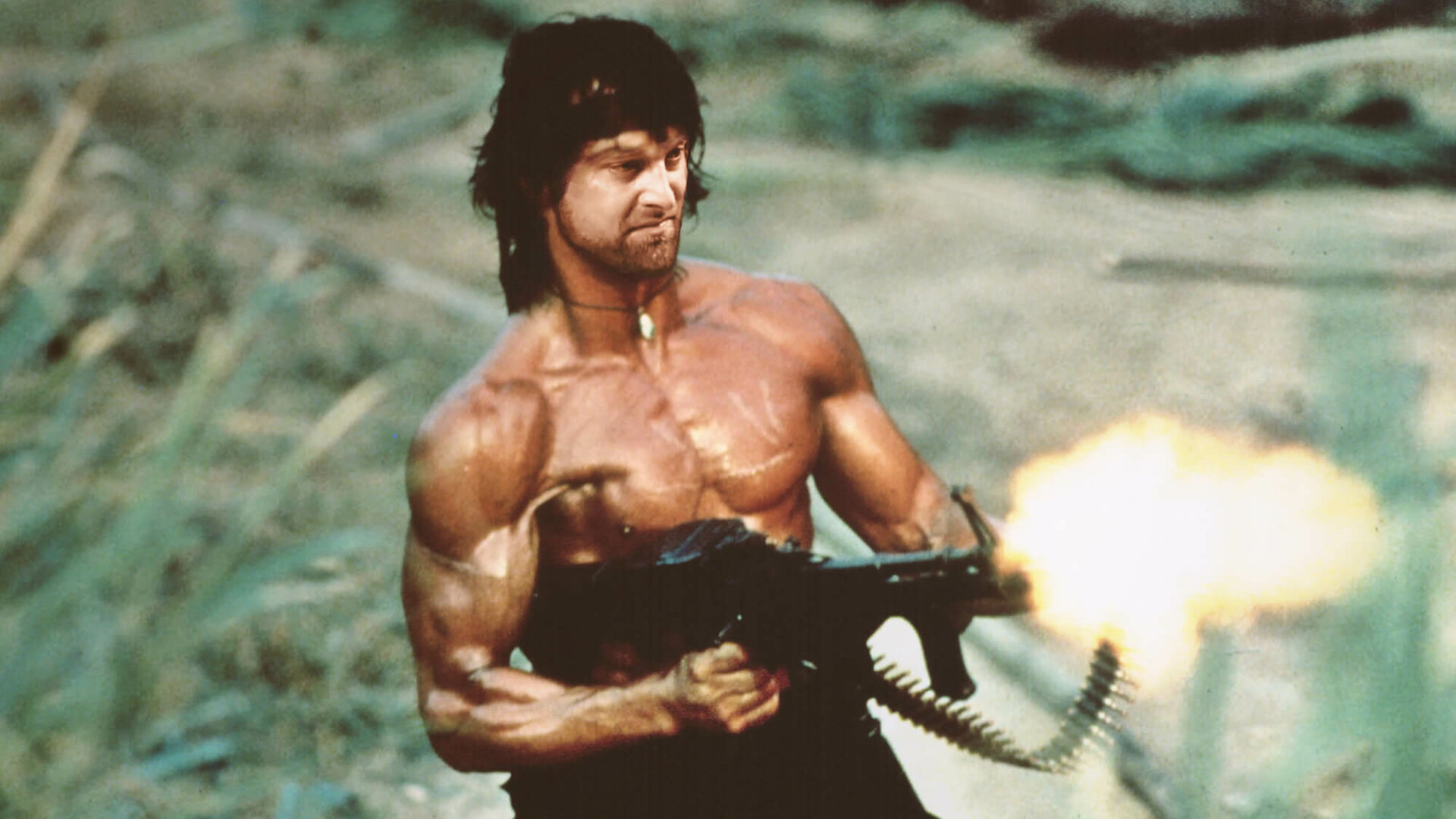One of the best things about fitness, as well as general social trends, is that things are cyclical. So what was popular, years ago, oftentimes comes back around again with the same level of ferocity as before, if not more. Anyone remember when kettlebells became popular again circa 2001-2006? Well, they did. Kind of like how they were popular among performing strongmen roughly a century before.
The interesting thing out of that time period was that people started eschewing other goals that people may have had. Especially if those goals were “vanity” focused or had to do with something other than gaining brute strength. Perhaps I am being too optimistic, but it seems like people are slowly coming around again, in that they’re not worrying about someone else unless the circumstances require it.
Now, the tide has turned again, and training for a good physique is a bit more main stream. And I think that’s great. No goal is “bad” if it’s something a person legitimately wants. To that end, everyone likes a nice set of arms. And since I have talked about training the forearms, it’s time to move on to the rest of the arms. After all, nobody wants forearms bigger than their biceps, even though that type of dedication in and of itself is impressive.
What do your Arms Actually Do?
Excellent question. Besides look good when you train them, your arms are responsible for several primary functions. Let’s start with the biceps:
- The biceps bend the elbow, like in any type of curl, pull-ups, chin-ups, and rowing motions.
- They also supinate your forearm. Hold your arm so that your humerus is straight and your elbow is bent. Turn your palm up and you’ll see and feel your biceps working.
- And to a lesser degree, they aid in humeral abduction, adduction, and flexion.
The triceps are bit simpler in their function, since their primary goal is to extend the elbow, like in a bench press, if you’re looking at the elbow joint.
And the names of each are self explanatory. The triceps has three heads, a lateral head, located on the outside of the arm, the medial head, located next to it, and on the other side of the medial head, we have the long head. The biceps has two heads, the long head on the outside, and the short head on the inside.
How to Train the Arms
Bentley at strengthandconditioningresearch.com cited several studies regarding the nature of the biceps and the triceps and noted that they are mostly comprised of type II muscle fibers. This means that they respond well to heavy lifting or speed. And it goes for the biceps and the triceps.
In addition to that, the range of movement at a joint is the strongest when it is extended. You’ll notice that you can lift significantly heavier weight on a three or four board bench press than you can when you do a full range of motion bench press. And the same goes for something like a dumbbell row, a pulling exercise. You’ll be able to do more at the start of the movement than you can at the end.
With that in mind, if you want to lift heavy and get big arms, it’s important to select the exercises that allow you best to maximize the load you can use. For that purpose we have two exercises.
Barbell Biceps Curl
Pretend that I am not doing these in a squat rack, if it suits you. But, it’s a pretty easy exercise. Having said that, there a few points of order to keep in mind:
- You want to keep your hands as close as you reasonably can, because if you’ll recall, the biceps help with abduction a little bit.
- You don’t want to swing the weight, because remember, this is the heavy exercise and you want the load to go to the biceps, and swinging at the beginning of the exercise—the point at which you are the strongest—is like stealing from yourself.
- If your wrists can’t handle it, spread your hands wider or opt for an EZ Bar curl instead.
Close Grip Bench Press
This is also a pretty straightforward exercise. Different people will, of course, find their own sweet spot in terms of grip, but I like to have everyone at least start with their index finger on the inner smooth portion right past the knurling on the bar. From there, you can make adjustments. My personal sweet spot is to have my pinkie and ring fingers on the knurling, and my middle and middle and ring fingers on the smooth.
Another option with this is to use the Smith machine. If you’ll recall in that piece, the studies I cited relay that the Smith machine reduces anterior deltoid activation in the bench, plus the track might alleviate any safety concerns you have, if you lift alone.
But whichever you choose, the key points are as follows:
- Don’t flare your elbows out.
- Apply the same rules as you would for a medium or wide grip bench press, otherwise.
Last, but not least, your thumb. Personally, I opt for a thumbless grip, since using my thumb at close range doesn’t make my wrists feel pleasant. If I move the grip wider, I can use my thumb, but I don’t feel it as much in my triceps. So it’s a trade off. And the safety (or lack of) of the false grip is something I am willing to accept as a trade off. Exercise caution if you make this same trade off.
Chin-ups
Usually, the chin-up is associated with your lats, and it is often a precursor to the pull-up, when people are working their way to that particular goal. And for good reason. The supination of the chin-up means more involvement of the biceps. And since it is a compound, multi-joint exercise, it means you can stimulate the biceps with a heavier load. Given all that, it deserves a mention.
Key points for form:
- It’s like the close grip bench press; you have to find your sweet spot in terms of grip.
- Shoulder width is a good rule of thumb to start with, and you have options to narrow the grip, if it feels good
- Don’t swing. This isn’t CrossFit.
- As you get better, you can attach a belt, or clip a dumbbell between your feet, and increase the load even more than what your body will offer.
Now, we have the exercises that give you the best bang for your buck out of the way, we can focus on others that will add in training the motions of the arms dynamically, as well as those that you can use to increase your overall training volume.
Incline Dumbbell Curl
This is one of my personal favorites. If you supinate as much as you can, you’ll really feel this as you complete the movement (as opposed to a preacher curl where most of the activation is at the beginning of the exercise).
It has some key points to remember, as well:
- Keep your upper arm straight and static. You don’t want your shoulder flexing while you do this.
- Keep the angle of the bench around 45 degrees. The closer you are to sitting upright, the more it becomes a basic standing curl. And we already went over that.
Hammer to Supinated Curl
This is just like it sounds. You grab the dumbbells, hammer curl them up, and lower like you would in a regular curl. I like this one because it’s a bit more dynamic and it recruits the other elbow flexor in your upper arm—the brachialis—while putting more work on your biceps as you lower it.
The key points are the same. Minimize the shoulder movement, and twist outward at the top. And don’t swing.
Dips
This classic, similar to the close grip bench, is one that you can either load up with weight or volume. But both are cool, too, depending on your goals or how you want to train.
Key points for the dip:
- The straighter your body is, the more impact it has on your triceps.
- The more angled your torso, the more pectoral stimulation you will achieve.
- Keep the distance between the bars as narrow as you can to focus on the triceps.
- As you get stronger, add a belt with weight, or clip a dumbbell between your feet for added resistance
Triceps Press Down
While not really an exercise you can load up in terms of weight, if hypertrophy is your goal, then this one will add much needed volume to your life. In the video, I use a bar, but you can opt for a rope attachment, as well.
For this one, as in most of the other exercises, don’t let your shoulders do the work. Keep them still, and press down to a lockout. Repeat often.
Conclusion
So, now that you have all that information afforded to you, it’s time to put it in action so your arms can grow. Therefore, I’ll put together an arm workout for your benefit. Do note, however, that I excluded chin-ups from the program, since they are usually regarded as a back exercise. As such, do them on back day, and enjoy the extra volume your arms get as icing on the proverbial cake.
If you are in a building phase, and you want to specialize in arm growth, you can do the following routine twice a week. For added benefit, add some forearm work at the end.
Here is the program:
Standing Barbell Curl – 4×4-6
Hammer to Supinated Curl – 3×10-12
Incline Dumbbell Curl – 3×8-10
Close Grip Bench Press – 4×4-6
Dips – 3×10-12
Triceps Press Down – 3×10-15
Now go forth, and bask in your vanity, judgment free.
References
- Saladin, K. S., Sullivan, S. J., & Gan, C. A. (2015). Anatomy & physiology: the unity of form and function. New York: McGraw-Hill Education.
- Bentley, A. (2016, December 05). Could this arm training program be any smarter? Retrieved September 17, 2017, from https://www.strengthandconditioningresearch.com/perspectives/really-smart-arm-training/
- Lehman, G. J. (2005). The influence of grip width and forearm pronation/supination on upper-body myoelectric activity during the flat bench press. Journal of Strength and Conditioning Research,19(3), 587-591. doi:10.1519/R-15024.1

